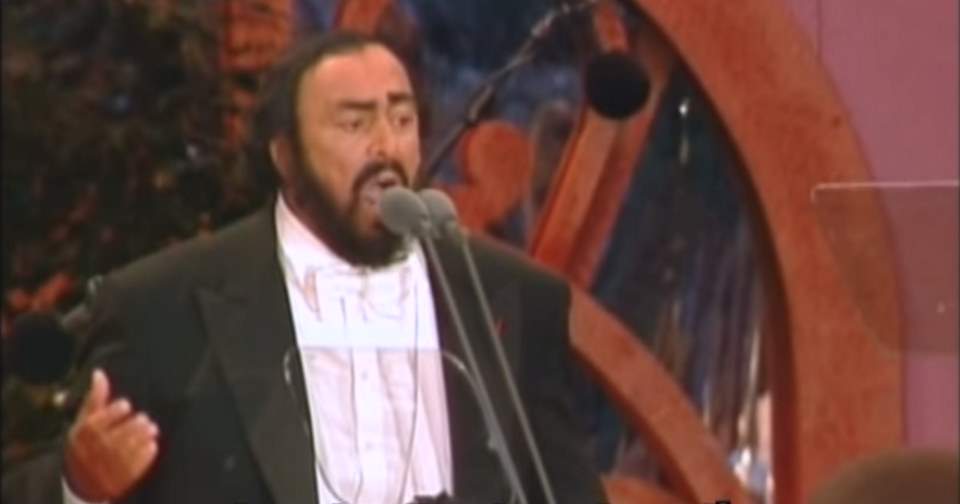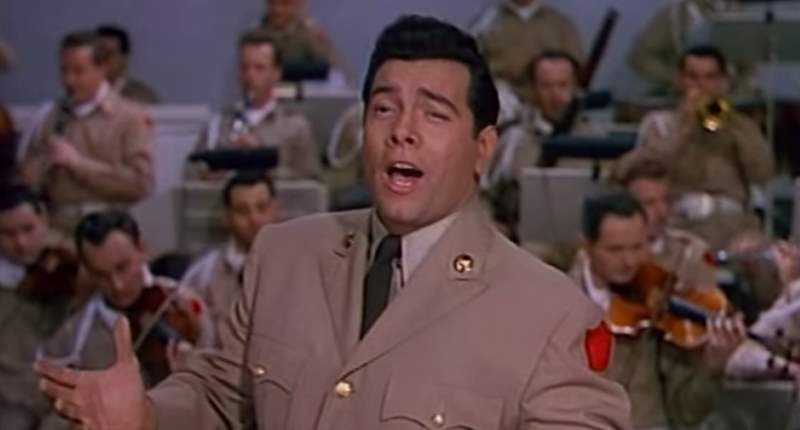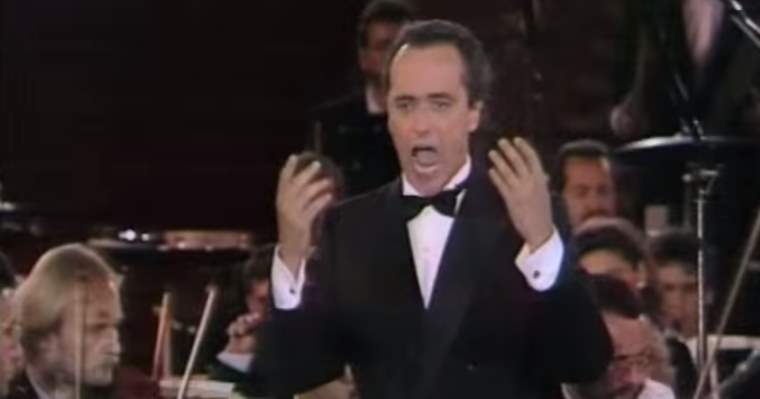The great Italian tenor of the 20th century, Franco Corelli sings Granada, a song about the Spanish city of Granada written in 1932 by the Mexican composer Agustín Lara.
This performance comes from a German television program broadcast in 1969, reaching audiences not only in Germany but also in other German-speaking countries and Hungary. In the show, Franco Corelli introduces himself and presents several arias in a format similar to the Italian program Incontro con Franco Corelli.
Although not performed live (Corelli is lip-syncing to a prior studio recording), these video segments are of great value. Very few video recordings of Corelli exist, and even fewer survive in color and in such remarkable quality.
The soundtrack used here originates from his 1965 album Melodie e canzoni / Franco Corelli sings “Granada” & Other Romantic Songs, conducted by Raffaele Mingardo.
Incontro con Franco Corelli (literally Meeting with Franco Corelli) was an Italian television program produced in the 1960s and broadcast by RAI (Radiotelevisione Italiana).
It was designed as a showcase for the great tenor Franco Corelli at the peak of his career. The format was relatively simple: Corelli appeared as both performer and personality, introducing himself to viewers, speaking a little, and above all performing arias and songs for television audiences. Unlike his stage performances at the world’s major opera houses, this program brought him into people’s homes, allowing Italian audiences to see and hear one of their most celebrated opera stars in a more intimate and accessible way.
Much like other music programs of that era, some segments were live, while others featured lip-sync to previously recorded studio tracks. This was common on TV at the time, both for technical reasons and to guarantee perfect sound quality.
The significance of Incontro con Franco Corelli lies in its rarity. Corelli was famously camera-shy and left behind relatively few filmed performances compared with contemporaries like Pavarotti or Domingo. Programs such as this one (and the later German TV special) are among the most precious surviving video documents of his artistry, especially in color and high broadcast quality.

Related: Luciano Pavarotti sings Granada
Agustín Lara’s Granada
Written in 1932, Granada quickly became one of the most iconic pieces of 20th-century Latin music. Although Lara had never visited the Andalusian city when he composed it, he painted a vivid musical portrait of Granada through words and melody, blending romantic idealism with fiery Spanish character.
Granada is both a love song and a hymn to a city. Its lyrics overflow with imagery: roses, bullfighters, and Moorish echoes that recall the city’s Islamic past. The melody is sweeping, operatic in scope, and lends itself easily to orchestral arrangements, which explains why it has been interpreted by a wide range of performers-from classical tenors like Plácido Domingo and Luciano Pavarotti to popular singers such as Frank Sinatra and Bing Crosby. Even instrumentalists, including guitarists and pianists, have embraced the song, further broadening its reach.
The piece embodies the pan-Hispanic sentiment common in Lara’s work: a romantic Mexico looking across the Atlantic toward Spain, weaving together shared cultural roots. This cross-oceanic dialogue gave Granada its universal resonance. The song’s grandeur, bolero rhythm, and dramatic vocal lines combine to create a sense of longing and exaltation that transcends borders.
Today, Granada is considered not only a Spanish classic but also a jewel of Mexican musical heritage. Its enduring popularity illustrates how music can idealize a place and, in doing so, make it immortal.
Granada Lyrics
The lyrics describe the beauty of the city of Granada in Andalusia, Spain, and the emotions that it evokes in the singer. The song is a love letter to the city and to Spain itself, with the singer expressing their admiration for the city’s architecture, gardens, and people.
The song is often performed in a dramatic and emotional style, with powerful vocals and sweeping orchestral accompaniment. The melody features a distinctive Spanish rhythm and incorporates elements of flamenco music.
Over the years, “Granada” has been covered by many artists in many different languages, including English, French, Italian, and German. The song remains popular to this day and is often considered a symbol of Spanish culture and heritage.
Spanish
Granada tierra soñada por mí
Mi cantar se vuelve gitano
Cuando es para ti.
Mi cantar hecho de fantasía
Mi cantar flor de melancolía
Que yo te vengo a dar.
Granada tierra ensangrentada
En tardes de toros,
Mujer que conserva el embrujo
De los ojos moros.
Te sueño rebelde y gitana
Cubierta de flores
Y beso tu boca de grana
Jugosa manzana
Que me habla de amores.
Granada manola cantada
En coplas preciosas,
No tengo otra cosa que darte
Que un ramo de rosas.
De rosas de suave fragancia
Que le dieron marco a la virgen morena.
Granada tu tierra esta llena
De lindas mujeres
De sangre y de sol.

Related: Mario Lanza sings Granada
English translation
Granada, the land of dreams, for me
My song becomes gypsy-like
When it is for you.
My song is made of fantasy
My song is a melancholy flower
That I come to give to you.
Granada, blood-stained soil
In bullfight afternoons
The woman who preserves the enchantment
Of Moorish eyes.
I dream of you rebellious, a gypsy
Covered with flowers
And I kiss your scarlet mouth
Juicy apple
That speaks to me of love affairs
Granada, my beautiful song
In precious verses
I have nothing else to give you
Than a bouquet of roses
Of roses of sweet fragrance
That framed the dark virgin.
Granada, your land is full
Of lovely women
Of blood and sun
Sources
- Granada (song) on Wikipedia
